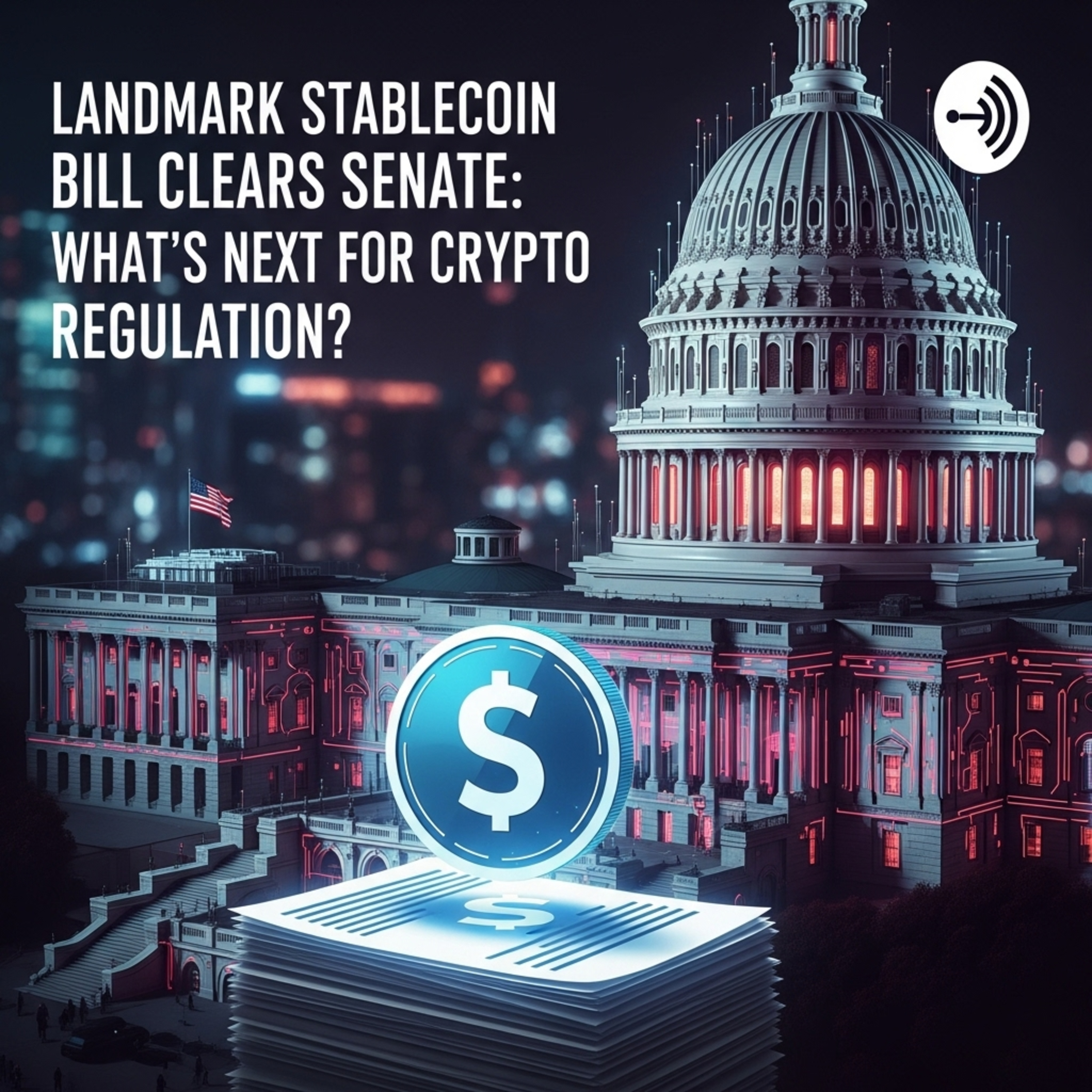Landmark Stablecoin Bill Clears Senate: What's Next for Crypto Regulation?
- Author
- Produced by Vib Kapila
- Published
- Wed 18 Jun 2025
- Episode Link
- https://podcasters.spotify.com/pod/show/cryptochronicles/episodes/Landmark-Stablecoin-Bill-Clears-Senate-Whats-Next-for-Crypto-Regulation-e34eajd
The digital money landscape is rapidly evolving, with stablecoins emerging as a significant component, currently valued at approximately $234 billion and projected to reach $2 trillion by 2028. This growth is driven by their utility as "cash on-chain" and increasing institutional interest. Concurrently, governments worldwide, including the US, EU, and Asian nations, are actively developing regulatory frameworks to address financial stability, transparency, and consumer protection concerns. A key debate centers on whether stablecoins should be interest-bearing and their potential impact on traditional banking deposits and the US Treasury market. While the market sees growing interest in tokenized money market funds (MMFs) as an alternative, regulatory clarity, exemplified by the proposed US GENIUS Act, is seen as a crucial enabler for further adoption and integration of stablecoins into the broader financial system. Bitcoin is also gaining attention as a potential national reserve asset, with some US states and other countries exploring its integration.
Key Themes and Facts:
- The Growing Significance of Stablecoins
- Emerging Alternatives: Tokenized Money Market Funds (MMFs)
- Global Regulatory Momentum and Frameworks
- Impact on Traditional Financial Systems
- Institutional Adoption of Cryptocurrencies
#Crypto
#Cryptocurrency
#Bitcoin
#Ethereum
#Blockchain
#Finance
#Investing
#Web3
#DeFi
#CryptoNews
#Stablecoin
#CryptoRegulation
#Senate
#GENIUSAct
#DigitalAssets
#Fintech
#CryptoLaw
#USPolitics
#FutureofFinance
#StablecoinBill
